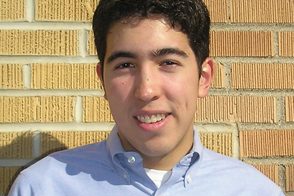Capturing a politician’s attention is a tricky task. A different breed than your average human, politicians have keen evasive skills and foolproof self-preservation systems, and are masters of deniability. Call them on the phone and they’re unavailable. Send a letter and it never arrived. Even protesting with thousands of people on a national level isn’t guaranteed to get their attention because, for the most part, the only platform audible to a politician’s ears, the whistle guaranteed to bring them running, is the voting booth. Re-election: the word on every politician’s mind almost all the time.
However, along with voting, there is one other process our elected officials follow closely because it too affects their jobs: the U.S. Census, that little sheet of paper we receive every 10 years that asks us where we live, who we live with, how much we make and other identifying questions.
Used for statistical purposes, the Census is important in allocating congressional seats, electoral votes and government funding. It shows demographics across all spectrums, including race, wealth and sexual orientation, and is a good indicator of social issues. For elected officials, it gives them a good idea of who their voter base is and exactly whose vote they need to court.
Using a site like Gay Demographics (www.gaydemographics.org), one can see how many gay couples live in each county or congressional district in the country. We can gauge fun facts like how West Hollywood is now America’s gay capital, or that only 1.09 percent of people live in areas without same-sex couples. But more importantly, facts like home ownership, employment, education, income and children for same-sex couples can be found as well.
Numbers don’t lie. The Census is how we know that 1 in 5 same-sex couples is raising children, the average income is $78,038, and that racial diversity is four times greater than in straight couples. In California’s 8th Congressional District, 7.73 percent of couples are same-sex, compared to 0.22 percent in Iowa’s 2nd. Almost every state in the country reported dramatic increases in same-sex couples in 2000 compared with 1990. And you can bet that next year, the numbers will rise once again.
Of course, these numbers are skewed due to the fact that many couples choose not to fill out the Census, out of fear or other reasons, and that sexual orientation cannot be determined for single individuals. But, they are a solid showing of how large our demographic truly is, and how much it will continue to grow. For our community, visibility is extremely important, and the Census is one of the only official ways for us to show our strength in numbers.
For fun, I checked out a Census Snapshot of Pennsylvania’s LGBT couples, compiled by The Williams Institute at UCLA Law School (www.law.ucla.edu). In 2000, 21,166 same-sex couples lived throughout every county of the state. Five years later, almost 8,000 new couples disclosed their status. The median age of gay couples is nearly 10 years younger than straight couples, along with a 10-percent greater employment rate. Perhaps most shocking, though, is that Philadelphia County does not have the highest percentage of LGBT couples in Pennsylvania. Pike County, congratulations.
Recently, officials announced that couples who are legally married in states that allow it will be able to indicate their status on the 2010 Census. While it might seem like an insignificant gesture, it will be yet another way to tell the government that we are here, we are queer, married, educated, diverse and important. Get used to it.
Contact Jason with feedback at [email protected].
